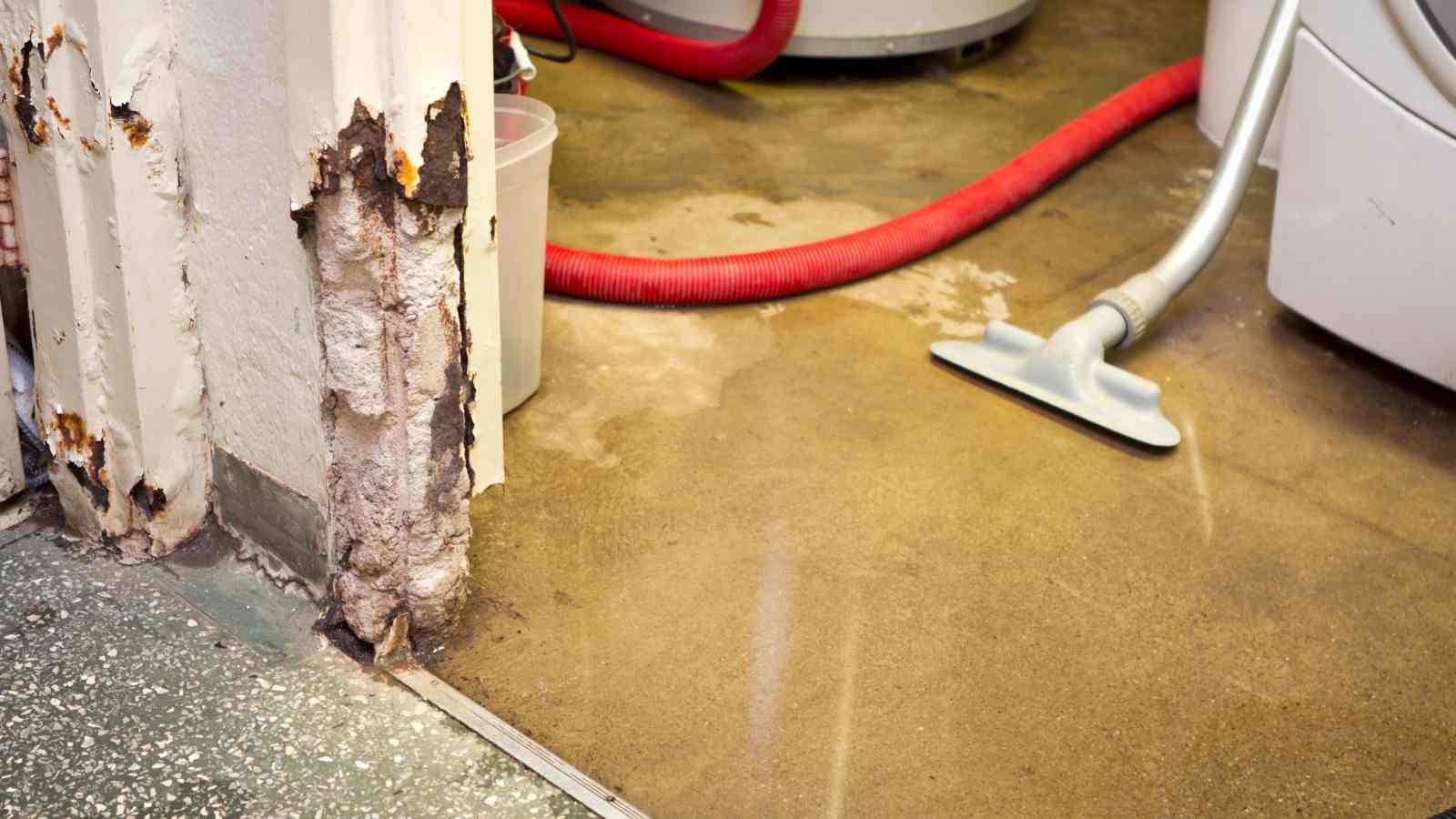Busted pipes or flooding damages don't disappear because you've wiped away the water. There's likely hidden damage caused by the water. Mold, for example, can begin growing within two days.
But is there anything specific you should know about the restoration process? How does water damage repair work, and does homeowners insurance cover it?
We'll discuss water damage restorations and what you should know about the process as a homeowner. Keep reading if you would like to learn more.

Jump to:
Water Damage Comes from Many Sources
One thing it's essential to remember is that water damage can come from indoors or outside. Flooding is primarily responsible for exterior water damage. Specifically, old or damaged structures let water into your home.
An example of an outdoor structure letting water inside is a clogged gutter. Damaged chimneys and leaky roofs can also allow water into your home.
Interior water sources are often leaking, including cracked appliances or faulty plumbing. Refrigerators, washing machines, and sinks cause water damage in many homes.
What is Water Damage Restoration?
Water damage restoration involves more than mopping up water. The restoration team has to take steps to make sure all the water is gone.
There are four steps all water damage companies take to ensure your house is inhabitable. We're going to talk about each one in detail below.
Water Removal
The first step during flood restoration operations is to remove the remaining water. Later, the restoration company will handle existing damage from the flooding or leak. For now, the goal is to prevent further deterioration.
The team measures the moisture level in the house once they've pumped the water out. Moisture measurements help the restoration crew decide if the flooring needs removing.
Drying and Dehumidifying
After removing the water from the area, the restoration service will dry everything. This step is where the cleanup crew uses industrial-strength dryers to remove water from items.
Restoration services keep mold and mildew growth from happening. Drying your home out also prevents damages like warping and cracking.
Cleaning and Sanitization
There are three water damage categories to help you identify water contamination levels. Category 1 contamination comes from freshwater sources like meltwater and damaged supply lines.
Category 1 water is generally safe and fit for human use. Category 2 contamination is graywater that contains potentially harmful substances. A few Category 2 sources are untreated spa and laundry water.
Category 3 water is "blackwater" and is likely to cause illness. Blackwater is heavily contaminated and often contains toxins and other pathogenic materials. Blackwater can contain substances like urine and feces.
The Sanitization Process
The sanitization process is an integral part of water damage repair. The goal is to ensure everything is safe and ready for use once the cleaning process is over.
Cleaning a water-damaged home may involve spraying and wiping down surfaces, dry cleaning, and wet cleaning. Immersion and abrasive cleaning are also methods used to clean and sterilize homes.
Mold remediation takes place during the cleaning process. Mold remediation is the process of removing the fungus from your property.
Restoration
Restoration is the final step of the process. Water damage repair returns your home to the state it was before the damage happened.
The restoration team repairs or replaces severely damaged items. Home restoration work can be as minor as fixing drywall patches or reconstructing entire portions of your home.
Does Insurance Cover Water Damage Restorations?
Sometimes water damage repair is covered by homeowners insurance. If the water damage is accidental, your insurance will help with restoration services.
The water can't touch the outside ground. When we've mentioned "flooding" before, we meant the flooding has to have only occurred inside your house.
It's difficult for some homeowners to know what type of water damage their homeowners insurance will cover. Here's a handy list to help you out:
- Burst pipes
- Frozen pipes
- Appliances (like an overflowing washing machine)
- Leaky roofs (the coverage doesn't extend to the roof itself)
- Mold (caused explicitly by water damage)
- Vandalism
Homeowners insurance doesn't cover water damage caused by negligence or poor maintenance. If you knew there was a leak or burst pipe somewhere, you're responsible for the repair fees.
Ground seepage and pipe backups are considered circumstances that a homeowner could reasonably foresee and handle.
In Need of Water Restoration Services?
You should know that water damage can come from clogged gutters or washing machines. Both indoor and outdoor sources can cause water damage inside your home.
Water damage restorations are complicated tasks involving removing standing water and drying waterlogged items inside your home. Cleaning, disinfecting, and restoration come after.
If you found this article helpful, try browsing for more like it on the website. You might find the Help & Guides or Home Improvement sections helpful.
